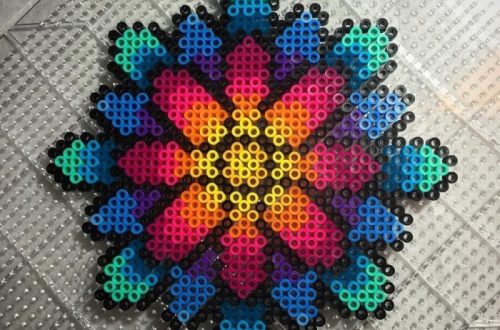Part 1: Understanding Oil Pastels
Oil pastels are a versatile and vibrant medium that can be used to create beautiful works of art. Here are two key points to understand about oil pastels for beginners:
1. Composition and Texture:
Oil pastels are a versatile and vibrant medium for artists, offering a range of techniques for creating stunning artwork with vibrant colors. Made from a blend of pigment, non-drying oil, and wax binder, they exhibit a creamy texture and intense color. Unlike traditional pastels, oil pastels require no solvents or brushes to achieve a painterly effect. They can be used on various surfaces, allowing for different textures and finishes. Their versatility also extends to different artistic styles, from expressive abstracts to detailed landscapes. Understanding their composition and experimenting with layering and blending techniques allows artists to unlock the full potential of oil pastels and create captivating works of art. Furthermore, preserving oil pastel artwork requires careful handling, proper fixing, and appropriate storage to ensure its longevity and vibrancy over time.

2. Color Mixing:
Oil pastels offer a wide range of possibilities when it comes to blending and mixing colors. Their unique composition allows for effortless layering and blending. This enables artists to create custom shades and gradients directly on the work surface. By mastering the art of color blending, artists can achieve a remarkable level of depth and complexity in their oil pastel artworks.
This technique not only allows for the creation of new and unique hues, but also enables seamless transitions between colors. This gives the artwork a sense of fluidity and harmony. Understanding the behavior of different colors when mixed and the impact of pressure and layering on the final result is essential for artists. This is vital for those looking to fully harness the potential of oil pastels. With practice and experimentation, artists can achieve stunning and nuanced color effects. This enhances the visual impact and expressiveness of their oil pastel creations.
Part 2: Basic Techniques for Using Oil Pastels
To create beautiful works of art with oil pastels, beginners should master some basic techniques. Here are two essential techniques for using oil pastels:
1. Layering:
Layering is a fundamental and versatile technique in oil pastel art. It allows artists to build depth and dimension in their artwork. By strategically layering and blending different colors, artists can achieve a rich, multidimensional finish. This adds visual interest and complexity to their creations.
When layering, it is crucial to begin with gentle pressure and gradually increase it. This ensures that the paper is not damaged and the colors do not smudge. This gradual approach to layering enables artists to carefully control the intensity and saturation of the colors. It also helps to avoid unintended blending or unwanted muddiness.
Additionally, layering can be used to create intricate details and intricate color transitions. This adds a sense of realism and refinement to the artwork. Recognizing the interplay between colors and understanding their layering properties is vital for artists seeking to leverage the full potential of oil pastels. It helps them produce captivating, multi-layered compositions.
2. Blending:
Blending is a critical technique in the repertoire of oil pastel artists, offering various methods to achieve seamless transitions and rich color effects. Artists can blend oil pastels using their fingers, imparting a personal touch and allowing for intimate control over the blending process. Blending stumps or tortillons can also be employed to achieve precise and controlled blending, particularly useful for intricate details. Additionally, artists may opt for a brush to achieve softer, more diffused effects, leveraging the flexibility and finesse of bristles to create delicate transitions between colors. Moreover, the use of colorless blenders provides a valuable tool for achieving smooth gradients and subtle transitions, enhancing the overall professional finish of an artwork.
Experimenting with different blending methods allows artists to discover the approach that best aligns with their artistic style and desired visual outcomes. Through exploration, artists can uncover the unique possibilities inherent in each blending technique, further expanding their mastery of oil pastels and broadening the range of expressive and technical options at their disposal.

Part 3: Tips for Working with Oil Pastels
Working with oil pastels can be a rewarding experience, but it also comes with its challenges. Here are two helpful tips for beginners to keep in mind:
1. Use Quality Paper:
The selection of the appropriate paper for oil pastel artworks is a crucial consideration, as it profoundly influences the final outcome of the piece. When working with oil pastels, it is essential to utilize heavyweight, textured paper that can withstand the application of multiple layers of color and blending without becoming damaged or warping. The paper’s ability to hold up against the substantial application of oil pastels is pivotal in producing durable and long-lasting artwork.
Specifically designed papers for oil pastels or mixed media are highly recommended due to their tooth and durability. The texture of these papers aids in gripping and holding the oil pastel pigment, facilitating better adhesion and allowing for the layering and blending techniques integral to oil pastel artwork. Moreover, the heavyweight nature of these papers provides the necessary support for the medium, preventing warping and ensuring the artwork’s structural integrity.
By using the right paper, artists can optimize the performance of their oil pastels, unleashing the full potential of the medium and creating professional-quality, enduring artwork. Selecting the appropriate paper tailored to the unique demands of oil pastel techniques is a strategic choice that can significantly enhance the overall quality and longevity of the finished artwork.
2. Protect Your Artwork:
Oil pastels possess a unique characteristic in that they do not fully dry like other mediums. This attribute necessitates special care to prevent smudging and transferring onto other surfaces. To safeguard the integrity of oil pastel artwork, utilizing a fixative spray specifically designed for oil pastels is crucial.
A designated fixative spray creates a protective barrier over the layers of color. It effectively seals the pigment and prevents it from smudging or transferring. This intervention ensures the preservation of the artwork. It also safeguards the vibrancy and integrity of the colors over time. By using a fixative spray, artists can confidently display and handle their oil pastel creations. This eliminates the risk of unintended alteration or damage.
Investing in a high-quality fixative spray and applying it according to the manufacturer’s guidelines is a proactive measure in safeguarding the longevity and visual appeal of oil pastel artworks. This protective step ultimately contributes to the lasting beauty of the artwork, allowing artists and art enthusiasts to enjoy and admire the pieces for years to come.

Part 4: Advanced Techniques to Explore
Once beginners have mastered the basic techniques of using oil pastels, they can begin to explore more advanced techniques to elevate their artwork. Here are two advanced techniques for artists to consider:
1. Sgraffito:
Sgraffito is a technique where artists scratch through layers of oil pastel to reveal the color underneath. This adds an element of texture and visual interest to the artwork. Artists can use tools like palette knives, toothpicks, or even their fingernails to create intricate designs and patterns through the layers of color.
2. Impasto:
Impasto is a technique where artists apply thick layers of oil pastel to create a three-dimensional texture. By layering and blending oil pastels with a heavy hand, artists can build up a raised surface that adds depth and dimension to their artwork. This technique can be used to create bold and expressive strokes that draw the viewer’s attention.
In conclusion, mastering oil pastels requires an understanding of their composition and texture, as well as the basic techniques and tips for working with them. By practicing and experimenting with different techniques, beginners can unleash the full potential of oil pastels and create stunning works of art. With dedication and passion, artists can continue to explore and develop their skills in oil pastel art.




